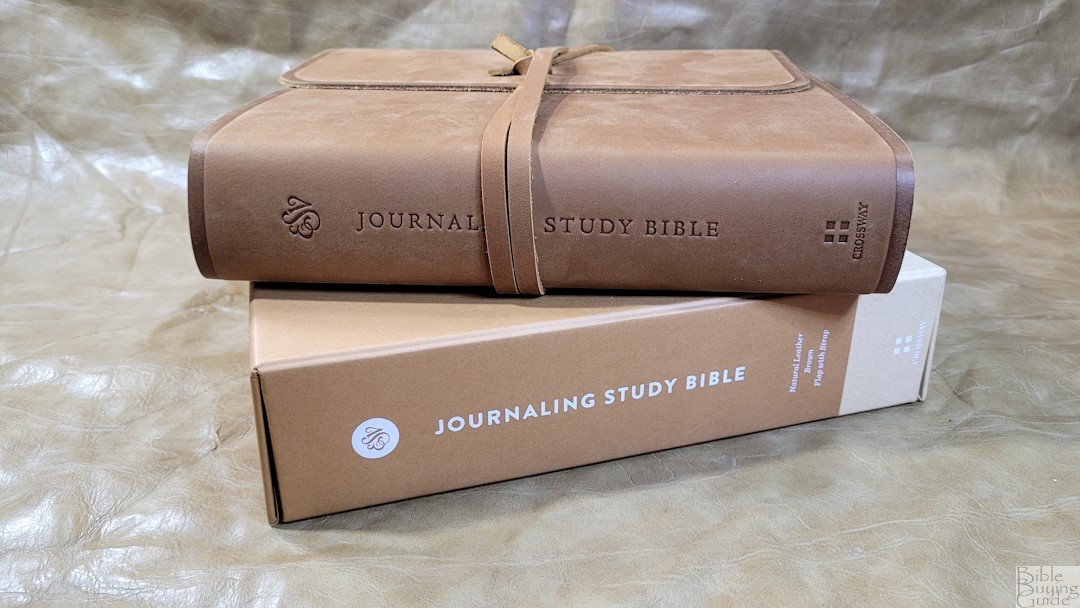
The ESV Journaling Study Bible is a version of the ESV Student Study Bible with wide outer margins. The pagination is the same, but there are a few minor tweaks to the design of the Bible Facts. Since the features match the ESV Student Study Bible, it trims some of the study notes and other features found in the regular ESV Study Bible. The main difference in the content between this edition and the Student Study Bible is this edition has 10 articles while the Student edition has 15. It’s available in several covers. I’m reviewing ISBN: 9781433590467, printed and bound in Chian by R. R. Donnelly & Sons.
Crossway provided this Bible in exchange for an honest review. I was not required to give a positive review, only an honest one. All opinions are my own.
_________________________________________________________
This Bible is available at (includes some affiliate links)
and many local Bible bookstores
_________________________________________________________
Table of Contents
- Video Review
- Cover and Binding
- Paper
- Typography
- References
- Book Introductions
- Study Material
- Concordance
- Maps
- Comparisons
- Conclusion
Video Review
Cover and Binding
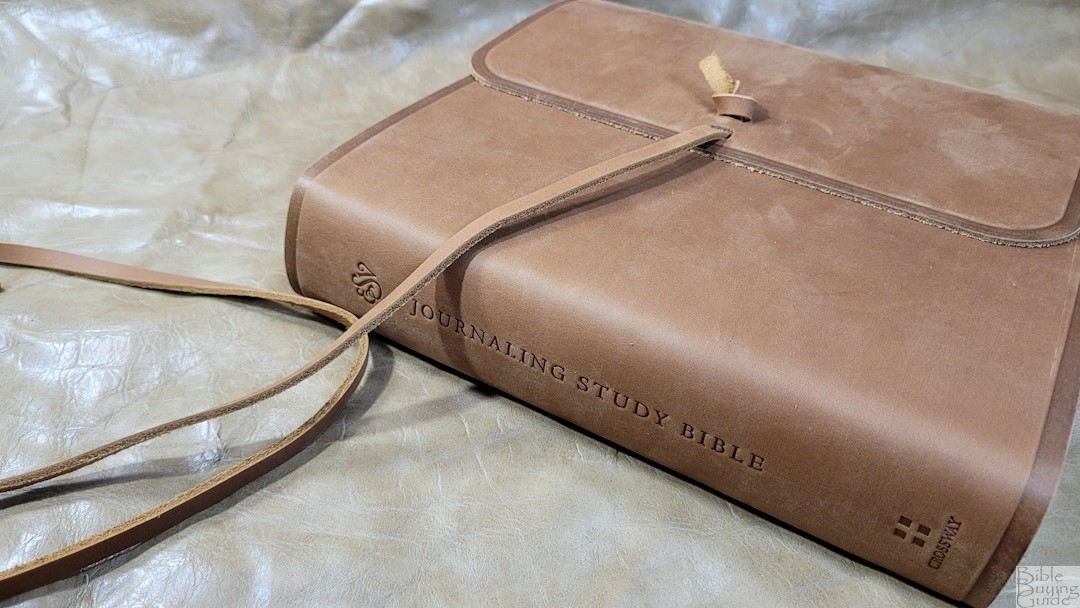
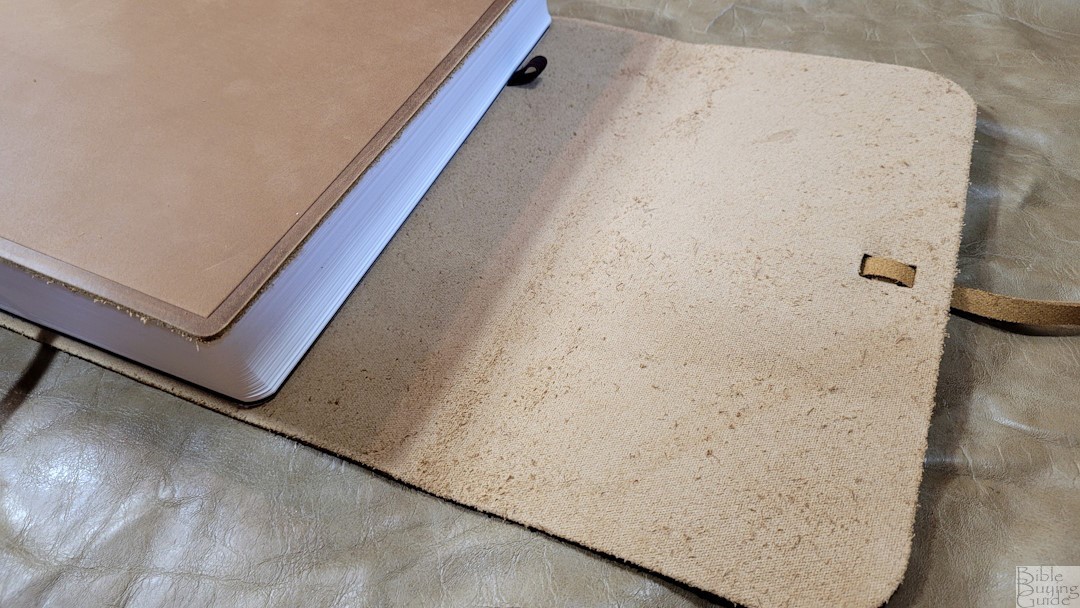
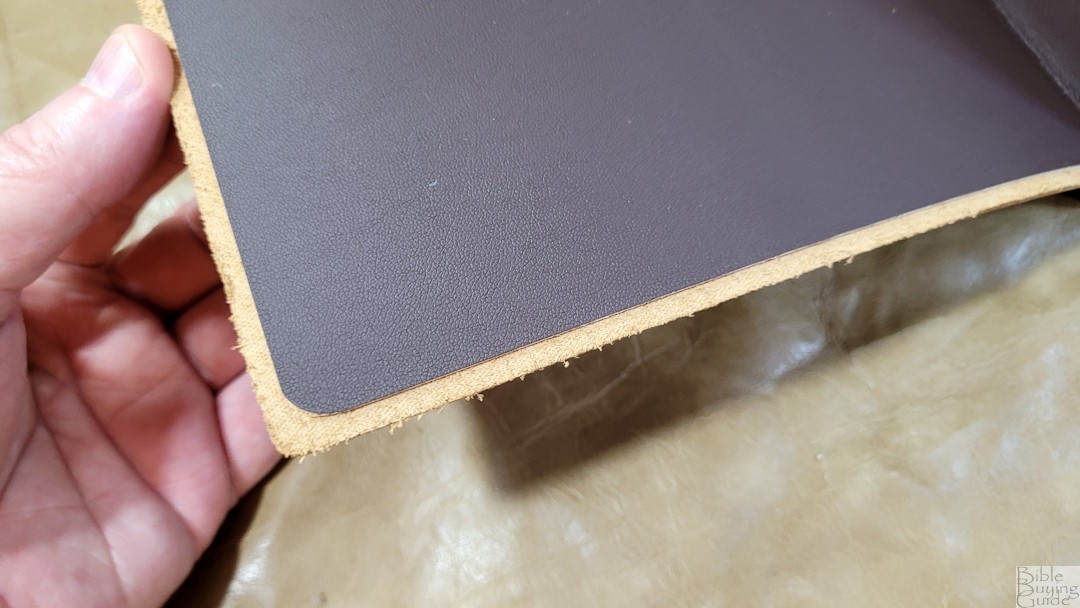
The cover is brown natural leather with a flap and strap. The outside of the cover is smooth with just enough roughness to feel that it’s real leather. The inside and edges of the cover are rough-cut. It’s debossed around the edges to give it an outlined design. Nothing is printed on the front or back. The spine has the text debossed and it’s slightly darker to be easy to read. The ESV and Crossway logos are printed vertically while the title is printed horizontally.
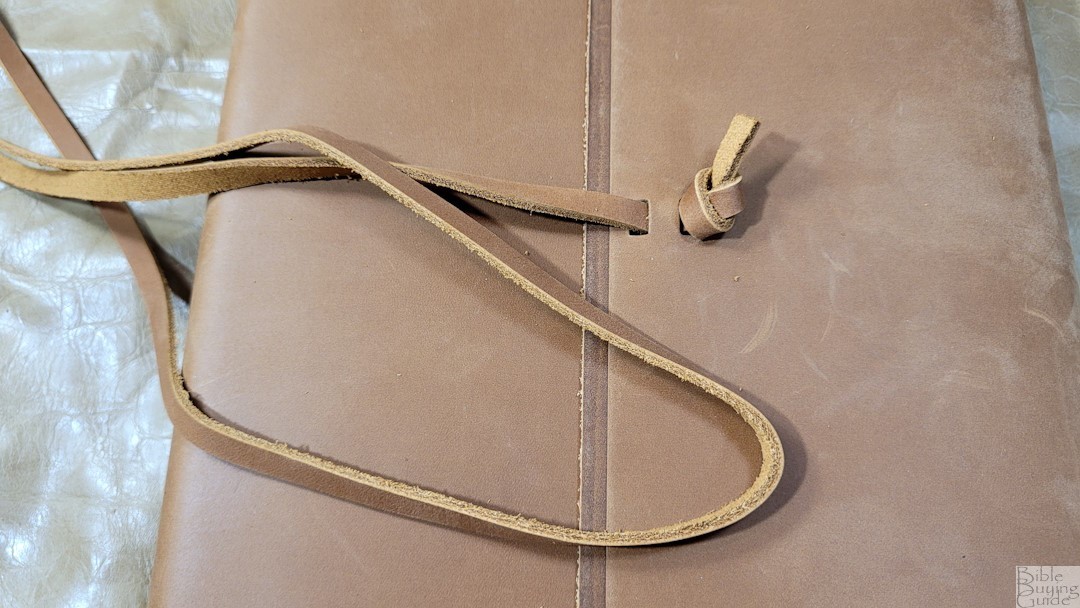
It comes with a strap with instructions on how to install it. Although, the strap isn’t as long as it shows in the instructions. I wasn’t able to wrap it around more than once and it isn’t long enough to pull across the front like it shows. It does get in the way a little while using the Bible, but I’d rather have it than not.

The block is glued to the cover is a very thick vinyl-coated board. It has lots of thick end sheets to give it structure. It’s Smyth sewn and it has no trouble staying open at the beginning of Genesis. On the inside of the flap is a pen loop to hold your pen or pencil. It has one extra-long 1/4″ brown ribbon. The overall size is 8 x 8.5 x 1.5″ and it weighs 3 lbs, 5.8 oz.
Paper

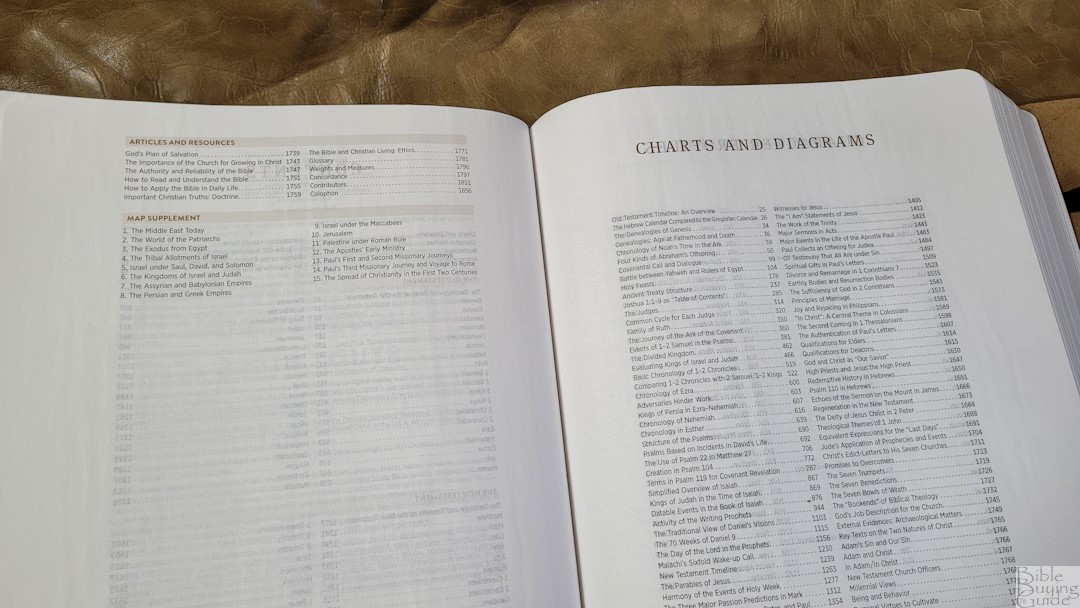

The paper is 30gsm. It feels thicker than that to my fingers because of the rough texture. I wouldn’t use this for artwork without Gesso, and I’d try a page in the back before drawing or painting on the Bible pages. The pages are easy to separate. It’s white in color and a lot more opaque than I expected for this thickness. The page edges are white.
Margins
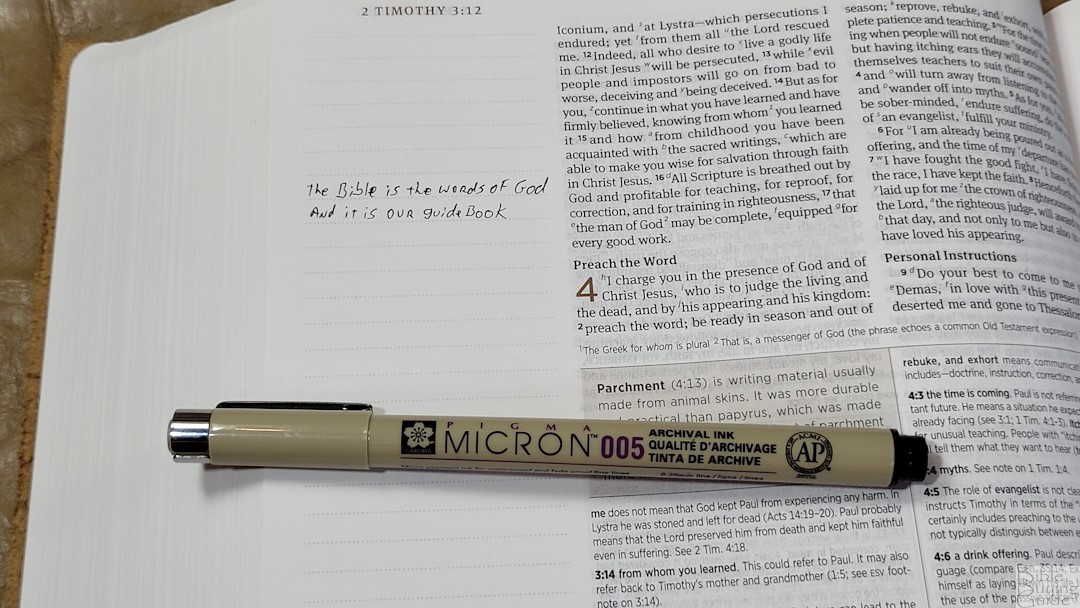
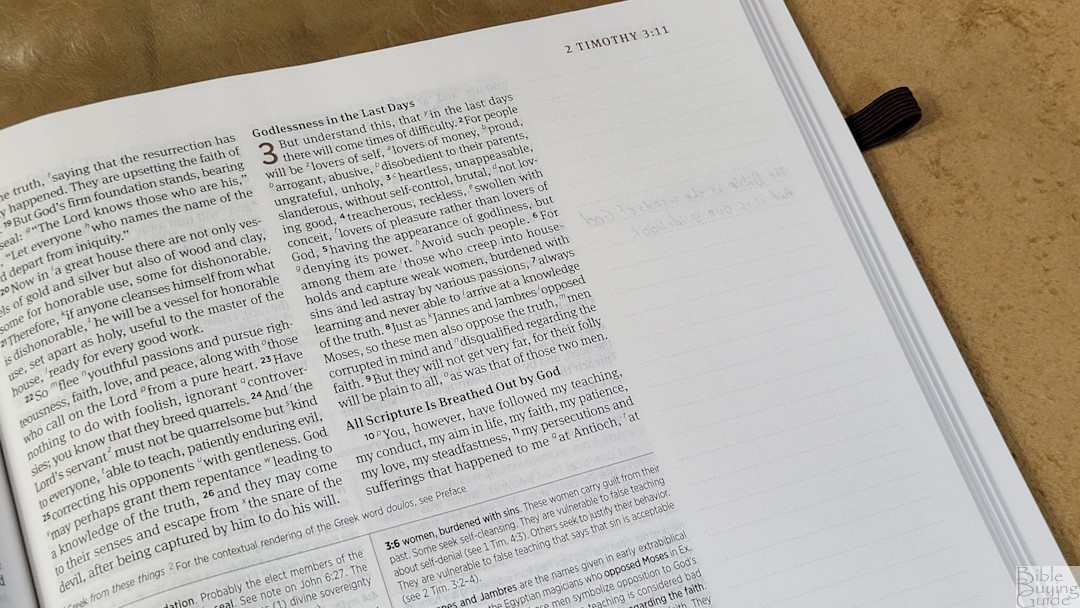
The journaling margins include dotted lines to write your notes, thoughts, prayers, outlines, etc. The dotted lines are printed on the right page, but they show through enough on the left page to use them easily. This keeps them light so they don’t get in the way. In this image, I’ve written a note with a 005 Pigma Micron. It does show through a little, but it isn’t bad.
Typography


The 2016 ESV test is presented in a double-column, paragraph format with poetry set to stanzas. The book name, chapter, and verse numbers are printed above the outer margin and the page numbers are printed under the outer margin. Translation footnotes appear under the text. A line separates the text from the commentary, which is also printed in two columns. The Cross-references are placed under the last note on the page.

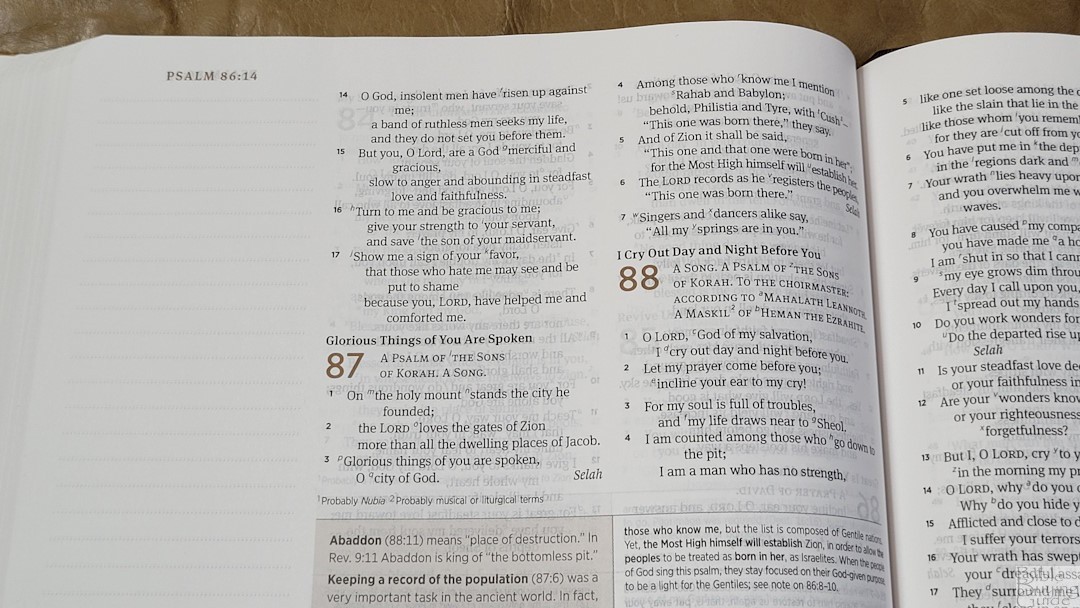
It’s typeset in a black-letter 8-point Meta Serif OT font. It has around 10 words per line. The typeface is thin but dark enough to read. It has a lot of space between the lines, so the text doesn’t feel crowded. The text isn’t line-matched, but the show-through isn’t bad or too distracting. The poetic setting does have a lot of lines with a single word.
References
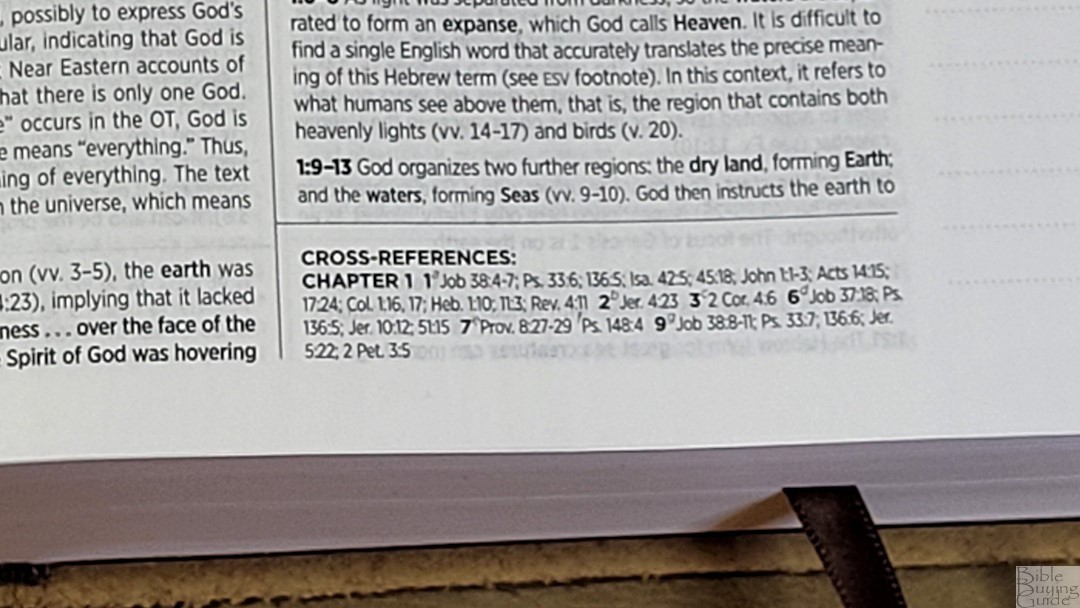
The ESV Journaling Study Bible includes 80,000 cross-references. They’re the same references that are used in the ESV Study Bible. They cover words and themes, making it an excellent Bible for personal study and sermon prep.
Here are a few examples of references to help you compare:
- Genesis 1:1 – Job 38:4-7; Ps 33:6; 136:5; Isa 42:5; 45:18; Jn 1:1-3; Ac 14:15; 17:24; Col 1:16, 17; Heb 1:10; 11:3; Rev 4:11
- Deuteronomy 6:4 – Cited Mk 12:29; Isa 42:8; Zech 14:9; Jn 17:3; 1 Cor 8:4, 6
- Isaiah 9:6 – Lk 2:11; Jn 3:16; ch 7:14; Mt 28:18; 1 Cor 15:25; ch 22:22; ch 28:29; ch 10:21; Deut 10:17; Neh 9:32; Jer 32:18; Ps 72:17; ch 63:16; Jn 14:18; Ps 72:7; Eph 2:14; see ch 1:6-9
- Matthew 28:19 – Mk 16:15, 16; ch 13:52; Lk 24:47; ch 24:14; Mk 11:17; Rom 1:5; Ac 8:16; 2 Cor 13:14
- Mark 12:29 – Lk 10:27; cited from Dt 6:4, 5; Rom 3:30; 1 Cor 8:4, 6; Gal 3:20; Eph 4:6; 1 Tim 1:17; 2:5; Jm 2:19; 4:12; Jude 25; Mt 19:17; 23:9
- John 1:1 – Gn 1:1; Col 1:17; 1 Jn 1:1; Rev 1:4, 8, 17; 3:14; 21:6; Rev 19:13; Heb 4:12; 1 Jn 1:1; 1 Jn 1:2; ch 17:5; Phil 2:6
- John 3:16 – Rom 5:8; Eph 2:4; 2 Thes 2:16; 1 Jn 3:1; 4:9, 10; see ch 1:29; Rom 8:32; ch 10:28
- Acts 2:38 – ch 3:19; 20:21; 26:18, 20; Lk 24:47; ch 22:16; ch 8:12; see Mk 16:16; ch 10:48; see ch 8:16; see Mk 1:4; ch 10:45; ch 8:15, 20; 11:17; see Jn 7:39
- Romans 10:9 – Mt 10:32; Lk 12:8; 1 Cor 12:3; Phil 2:11; see Ac 16:31; 1 Pet 1:21; see Ac 2:24
- 1 John 1:1 – see Jn 1:1; ch 2:13, 14; Ac 4:20; Jn 19:35; ch 4:14; Jn 1:14; 2 Pet 1:1; Lk 24:39; Jn 20:27
Book Introductions
There are several types of introductions.
Bible Introduction
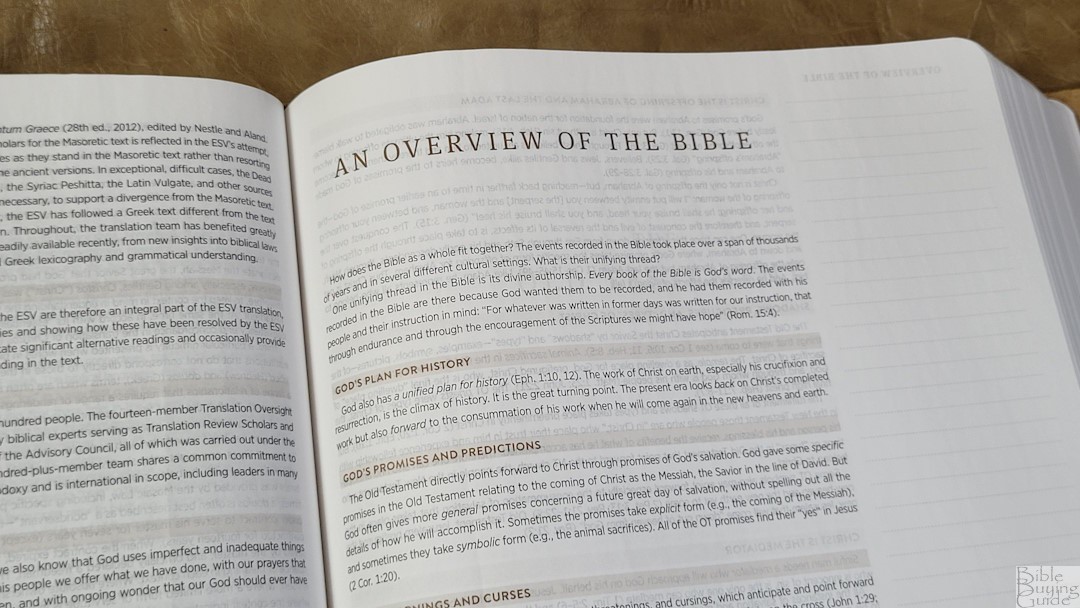
This is an overview of the Bible. It includes several paragraphs that cover:
- God’s plan for history
- God’s promises and predictions
- God’s warnings and curses
- God’s covenant commitment and instructions
- Christ is the offspring of Abraham and the last Adam
- Shadows, prefigures, and types of Christ
- Christ the mediator
Testament Introduction
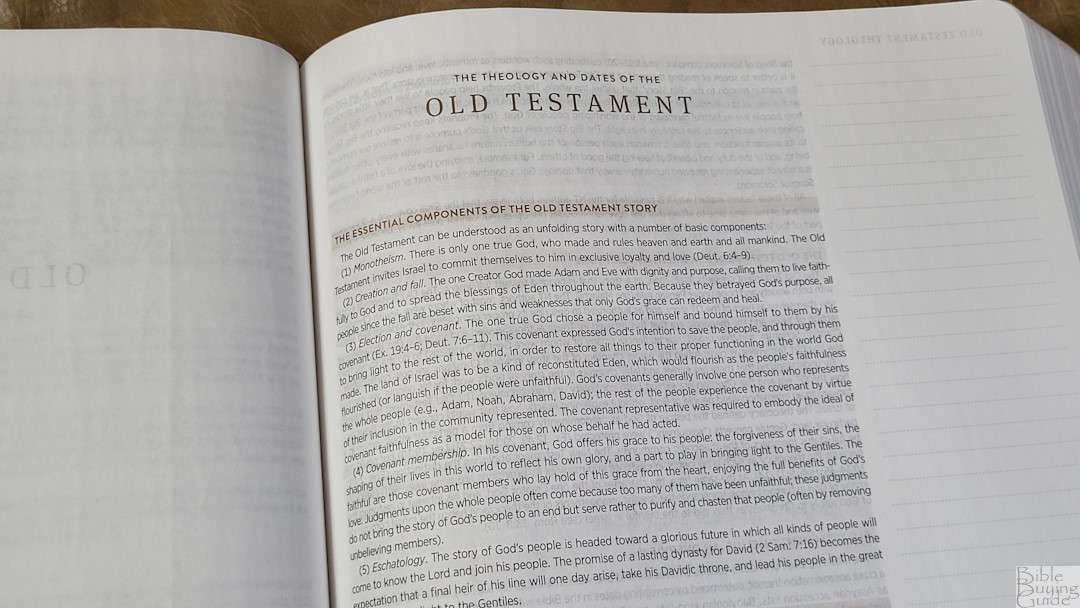

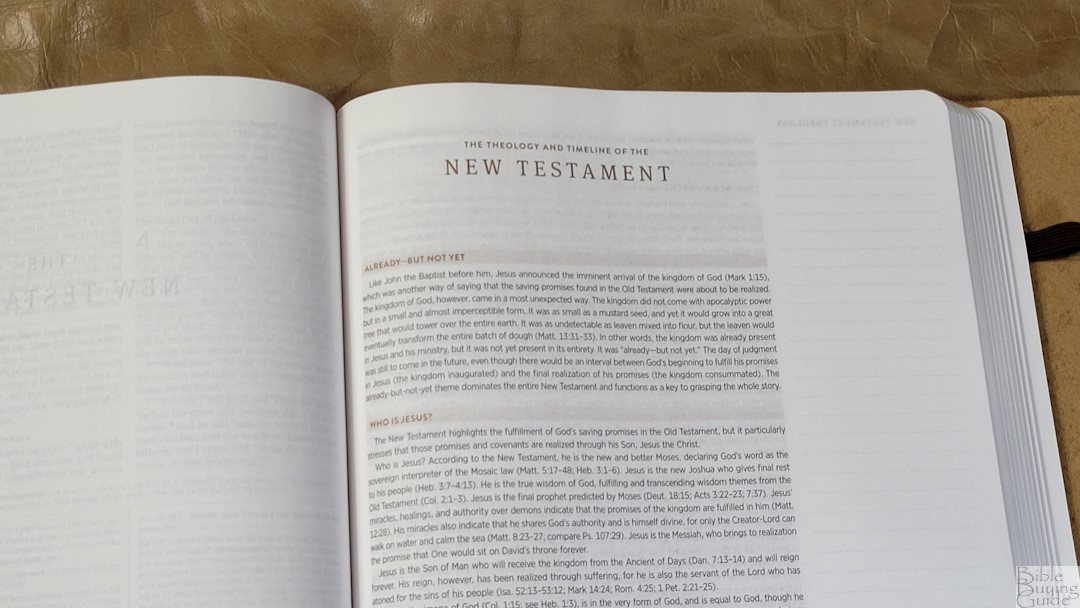
Both the Old and New Testaments have an introduction with several pages each. They cover the essential components of their stories, the parts of the testaments, how it’s Christian Scripture, a timeline, who is Jesus, the cross, the promise of the Holy Spirit, the Church, and more.
Book Introductions


The book introductions take one page and include a timeline of the major events in the book. It provides a paragraph for the main sections that cover the author and date, purpose, and key themes. Some add other information such as a theme, background, outline, and a map. This variation of detail makes some of the books feel a touch inconsistent with the others. They are written well and provide some good basic information that’s excellent for study.
Study Material
The study material is the same as the Student Study Bible.
Study Material
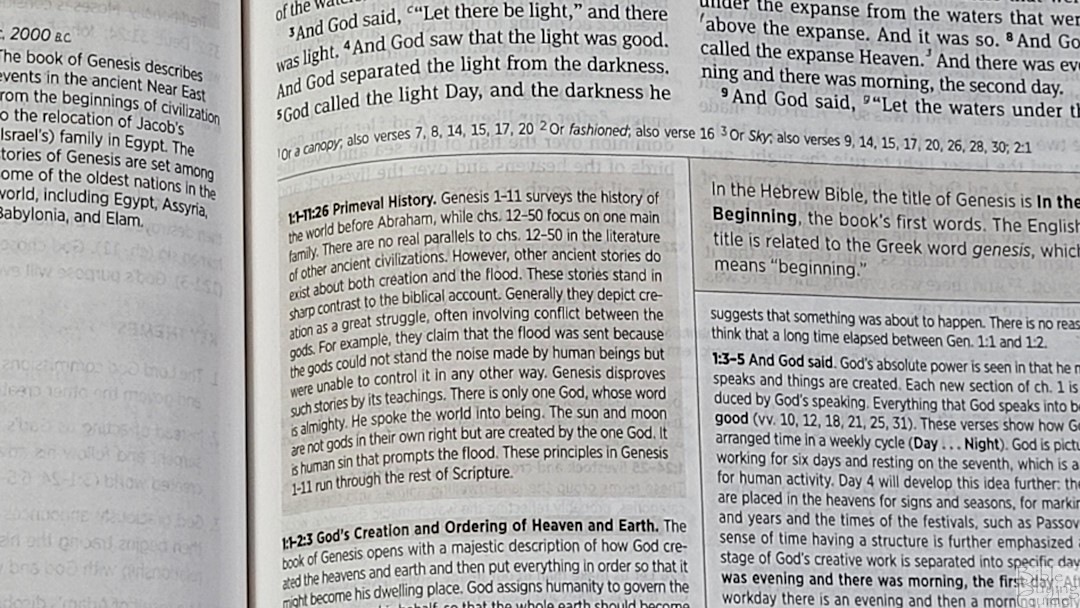
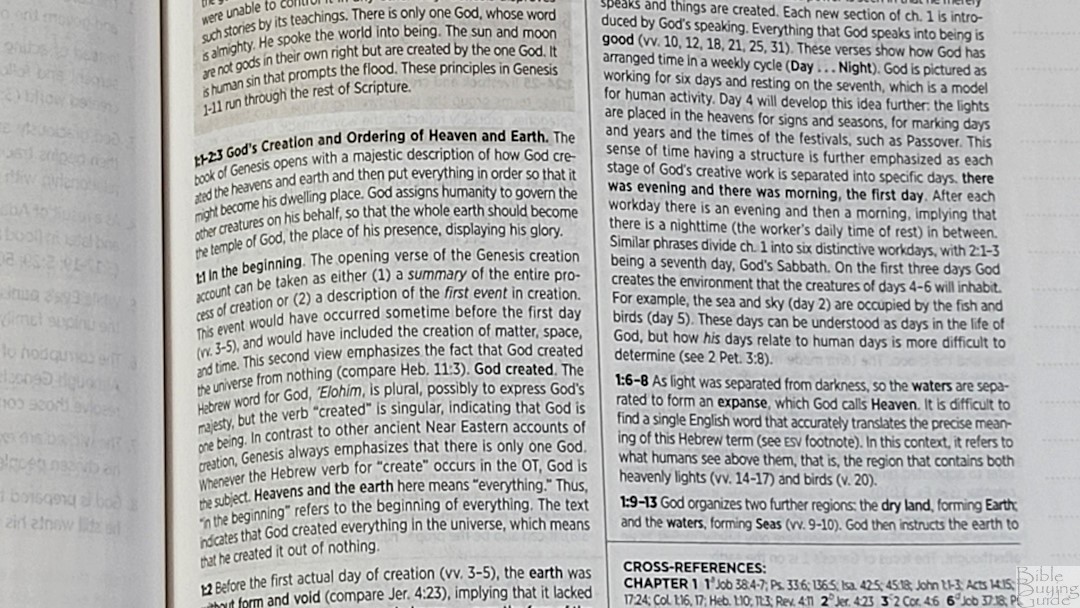
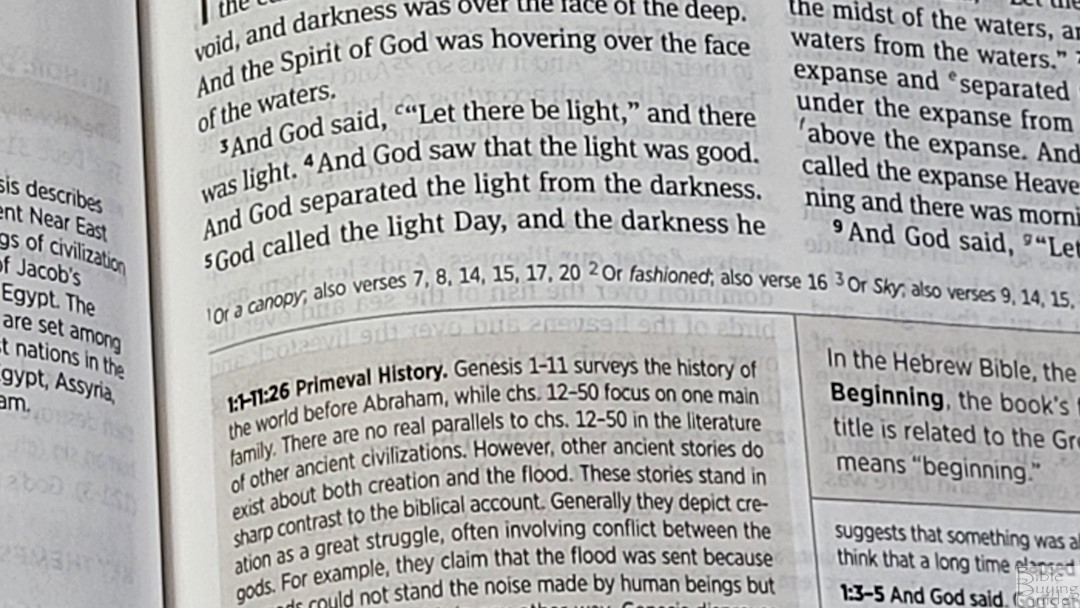
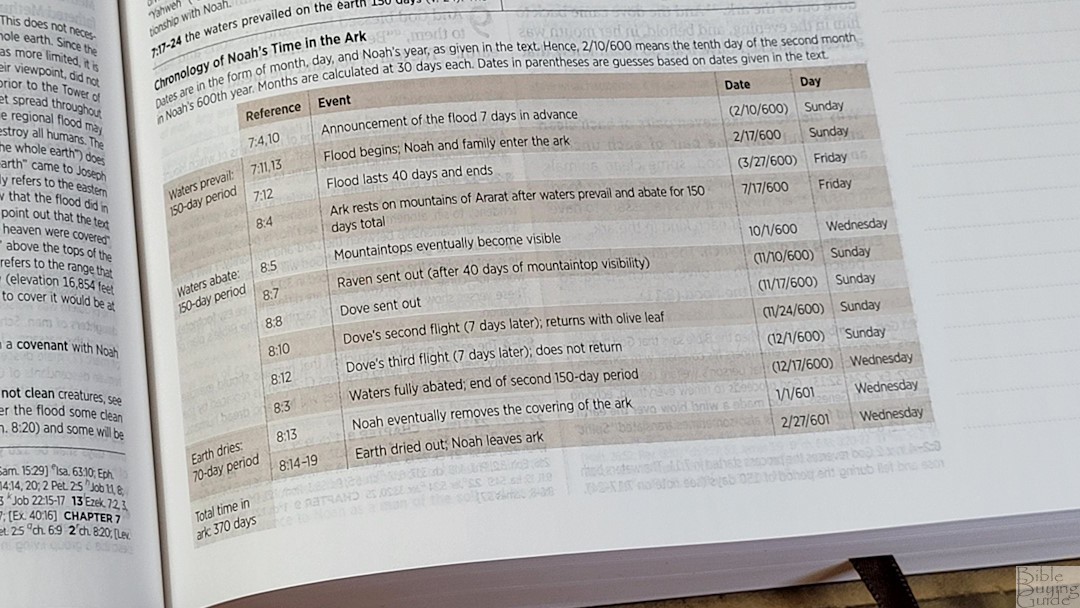
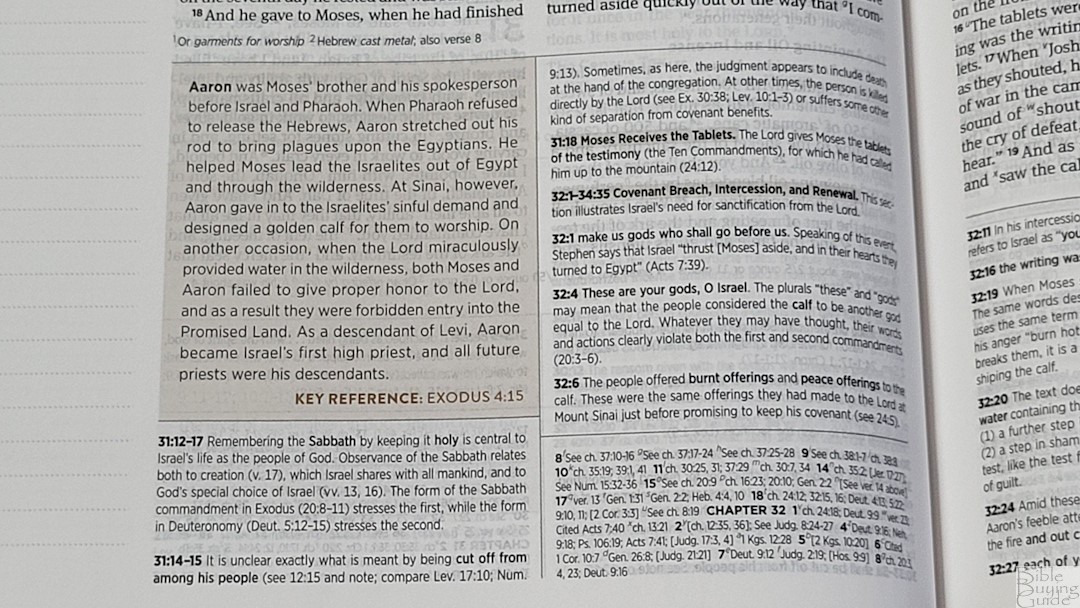
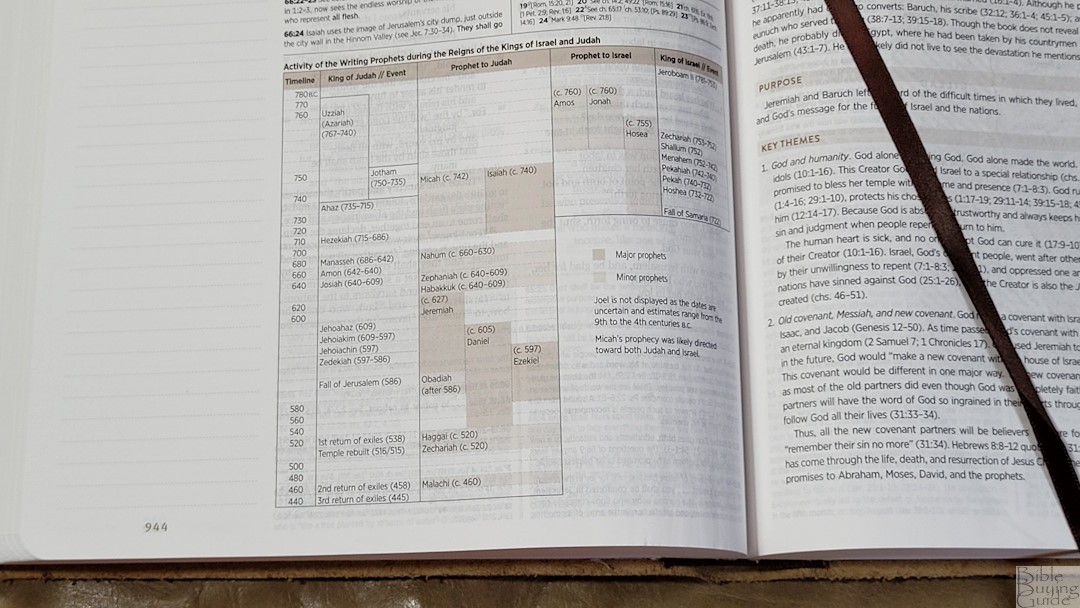

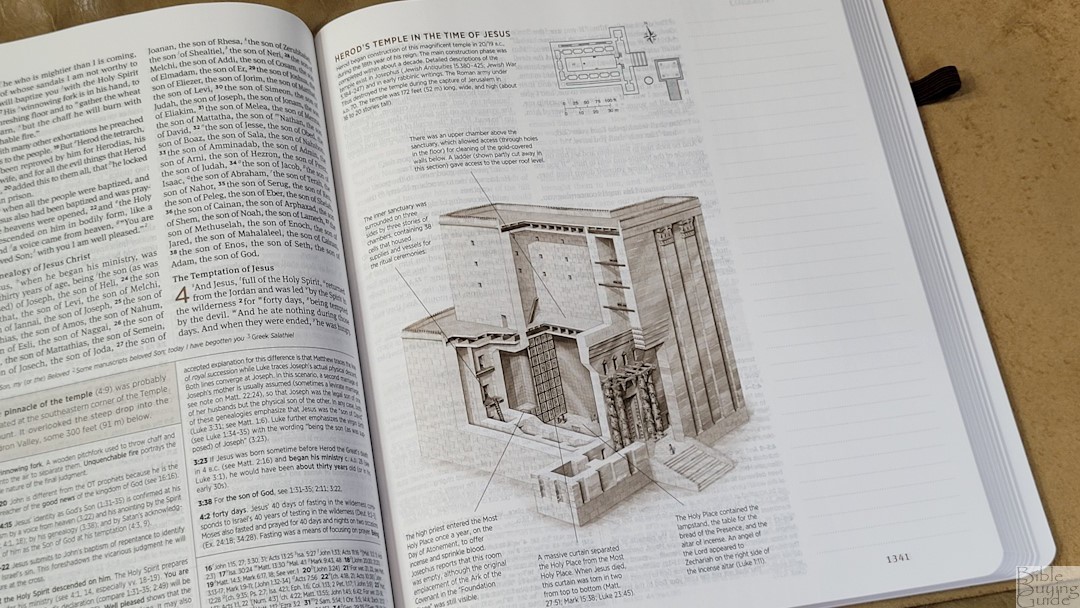
The study material includes study notes, charts, maps, character profiles, and Bible facts. All of this material is placed at the bottom of the page. It includes 12,000 study notes, over 80 maps and illustrations, 120 character profiles, and lots of Bible facts.
This is a reduced version of the commentary from the ESV Study Bible. It provides lots of information about the text including facts and theological points from a Reformed view. The Bible Facts are printed in tan boxes so they stand out. These are my favorite notes. The charts include chronologies, lists of names with dates and Scripture references, etc. Most of the 80+ maps and illustrations appear in the book introductions. Some of the illustrations take two pages and include temples, the Tabernacle, etc. The character profiles also include tan backgrounds. They provide a paragraph with information and a key reference.
Articles and Resources
In the back is a section of articles and resources. These are the same found in the Student Study Bible, but this edition has fewer articles. They’re well-written and include several articles on the Bible itself, which is great for understanding that it is the Word of God and how to read and apply it.
Articles
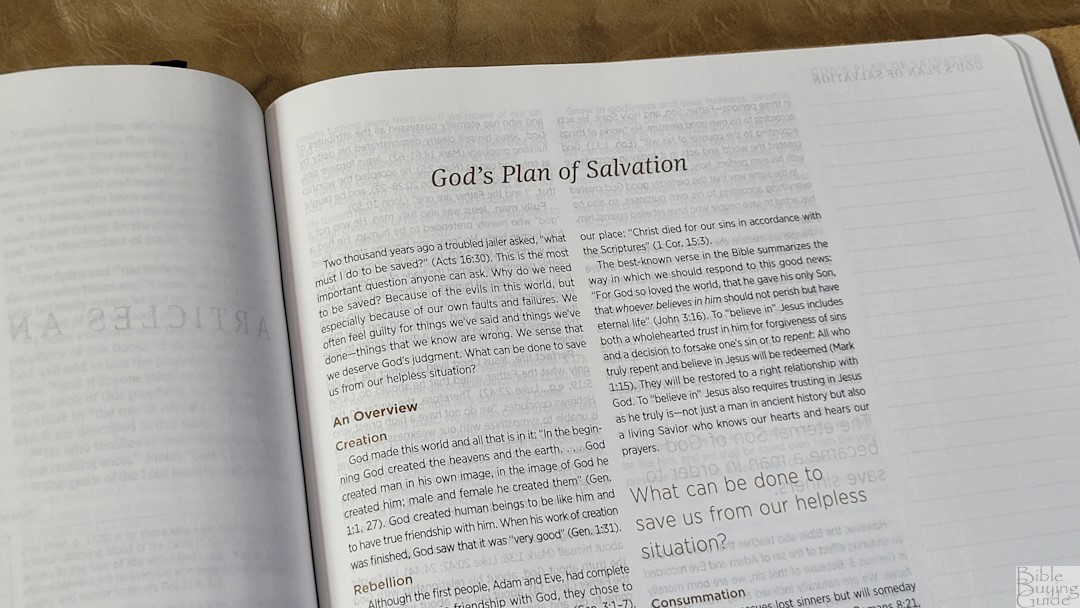
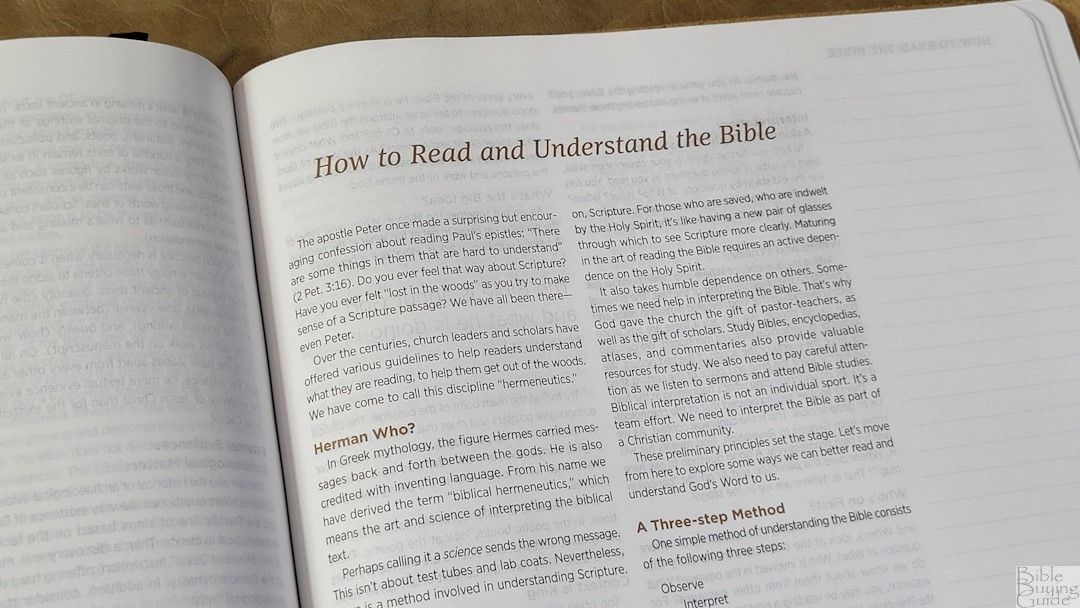

Articles include:
- God’s Plan of Salvation
- The Importance of the Church for Growing in Christ
- The Authority and Reliability of the Bible
- How to Read and Understand the Bible
- How to Apply the Bible in Daily Life
- Important Christian Truths: Doctrine
- The Bible and Christian Living: Ethics
Glossary

This is a 15-page glossary of the major theological terms. Of course, this does mean it includes some theology. The definitions are simple and some include Scripture references. This is a good tool to learn words that many people use without explaining them.
Table of Weights and Measures
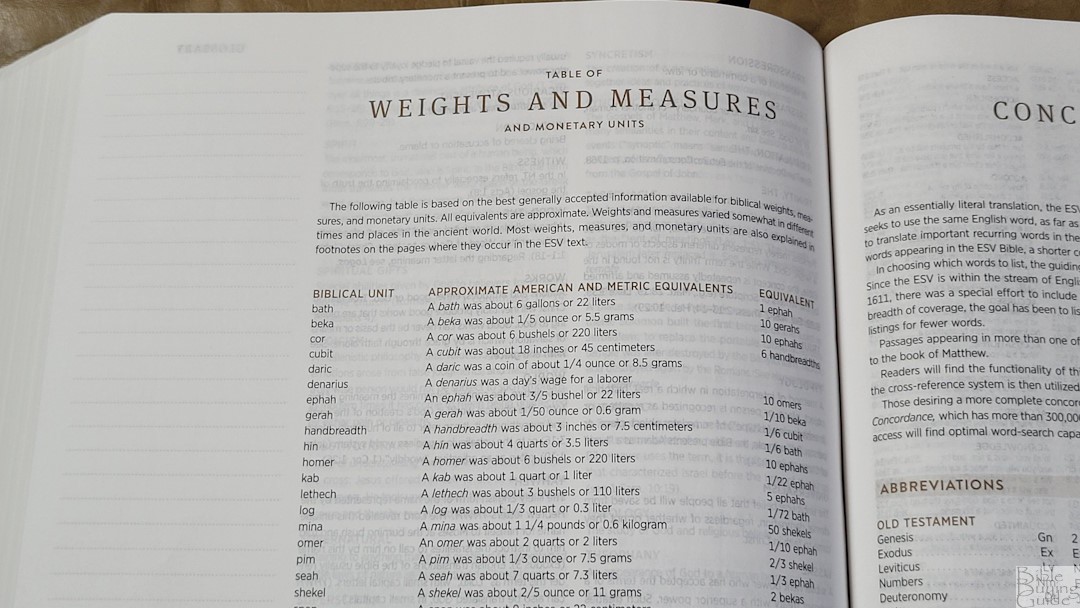
This is a one-page table with the biblical unit, approximate American and metric equivalents, and the biblical equivalent. These are also found in the footnotes.
Concordance
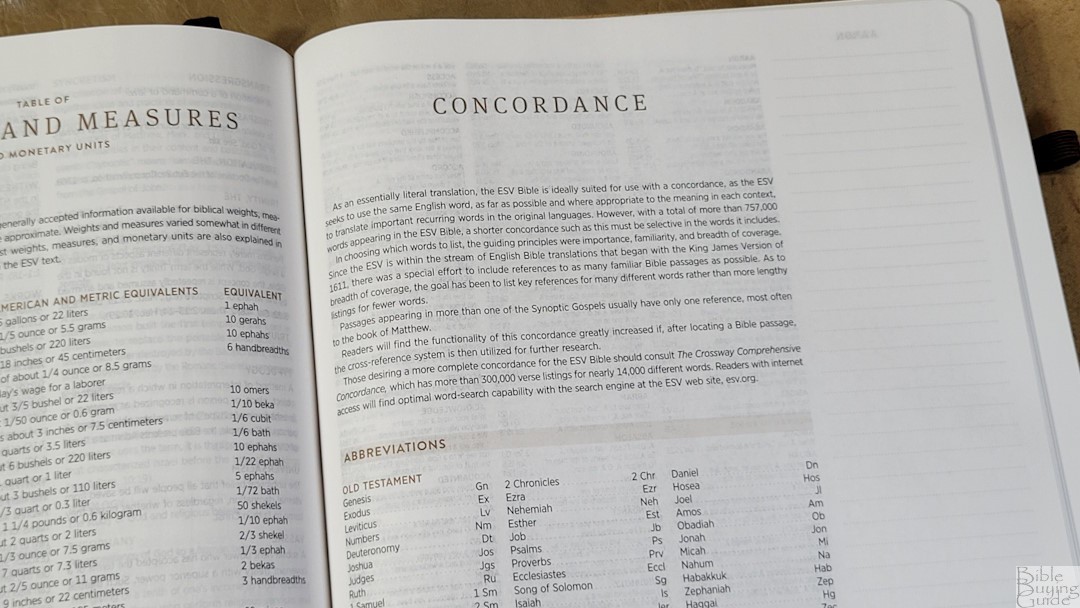

This Bible has a large concordance with 55 pages and 3 columns per page. It includes proper names of the most prominent people and places. This is the same concordance used in many of Crossway’s study Bibles. It’s a good concordance for personal study and sermon prep.
Sample entries include:
- Christ – 16
- Christ’s – 4
- Christian – 2
- Faith – 28
- Faithful – 10
- Faithfulness – 6
- Faithless – 1
- God – 49
- Godliness – 4
- Godly – 3
- Gods – 2
- Praise – 19
- Praised – 2
- Praises – 2
- Pray – 11
- Prayer – 10
- Prayers – 6
- Praying – 3
Maps
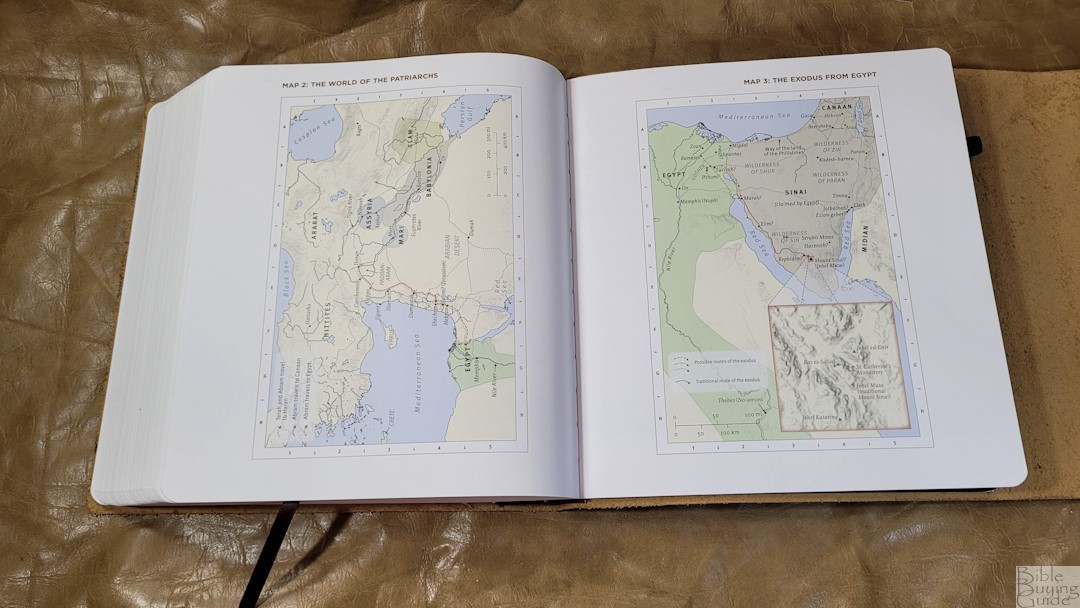
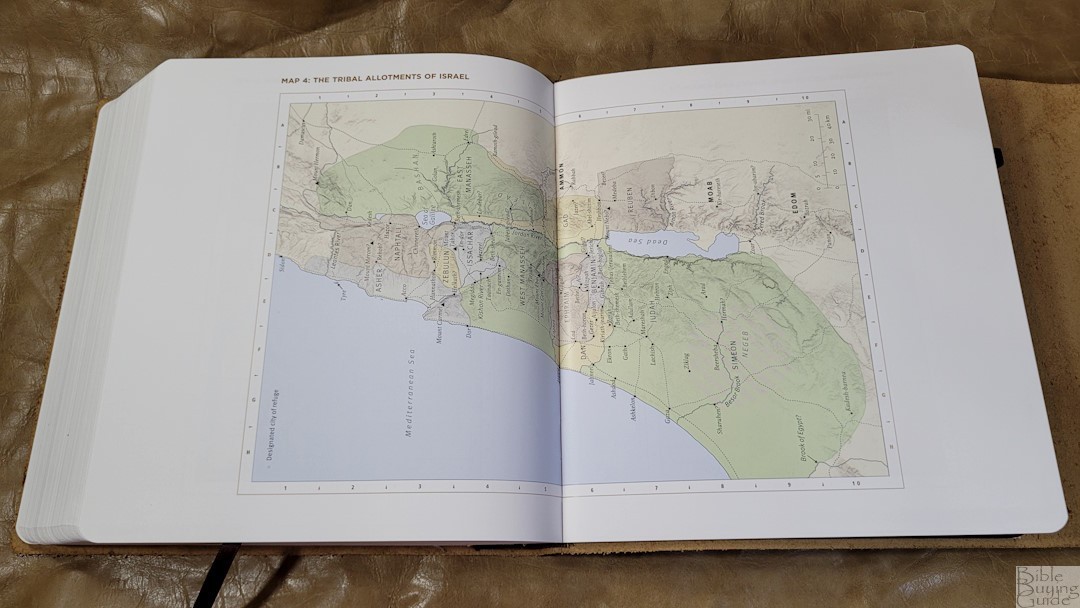
It has 15 full-color maps in the back printed on thick, semi-glossy, paper. The colors are toned down and look great. There isn’t an index to maps but the labels are large and easy to see. I found them easy to use. They include distance, journeys of Abraham, topography, possible and traditional routes of the Exodus, kingdoms, empires, realms, territories, dates, etc.
Maps include:
- The Middle East Today
- The World of the Patriarchs
- The Exodus from Egypt
- The Tribal Allotments of Israel
- Israel Under Saul, David, and Solomon
- The Kingdoms of Israel and Judah
- The Assyrian and Babylonian Empires
- The Persian and Greek Empires
- Israel Under the Maccabees (C. 164-63 B.C.)
- Jerusalem
- Palestine Under Roman Rule (C. 37 B.C.-A.D. 66)
- The Apostle’s Early Ministry
- Paul’s First and Second Missionary Journeys
- Paul’s Third Missionary Journey and His Voyage to Rome
- The Spread of Christianity in the First Two Centuries
Comparisons
Here’s how the Journaling Study Bible compares to the ESV Study Bible.
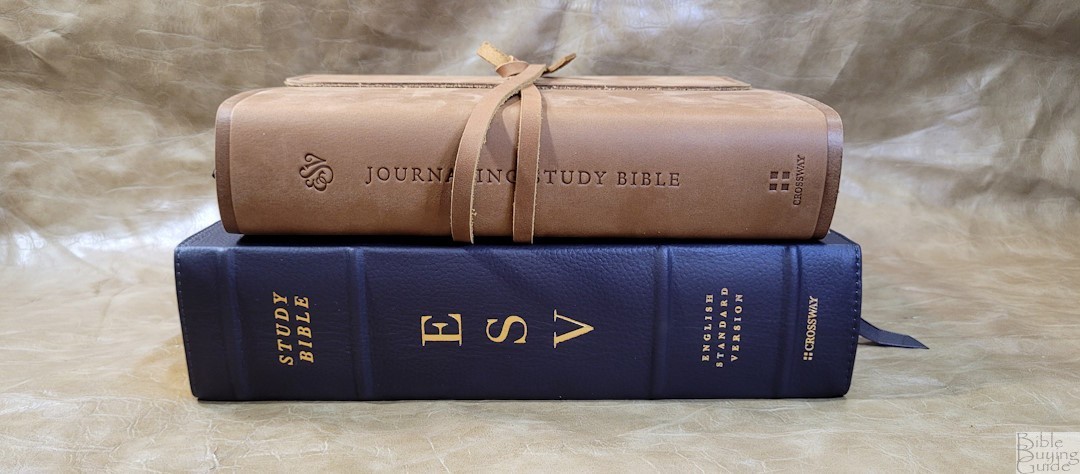
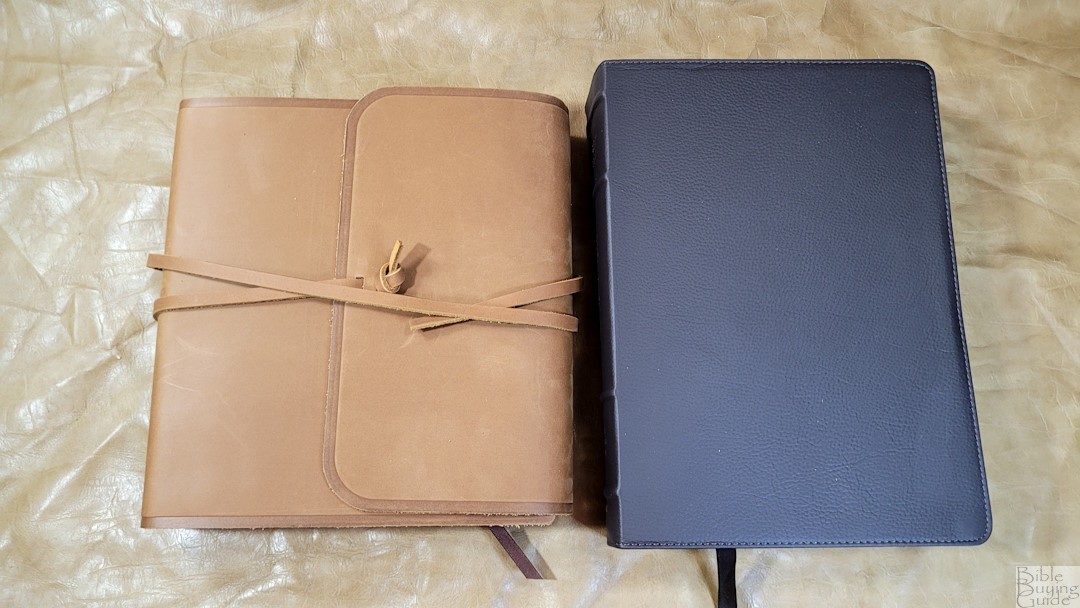
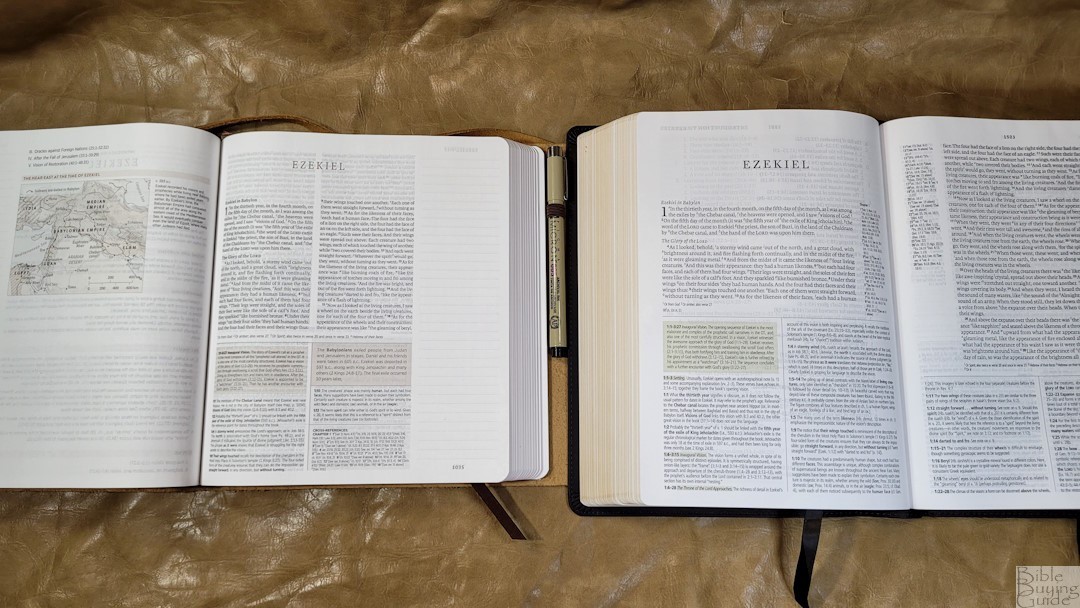

Conclusion
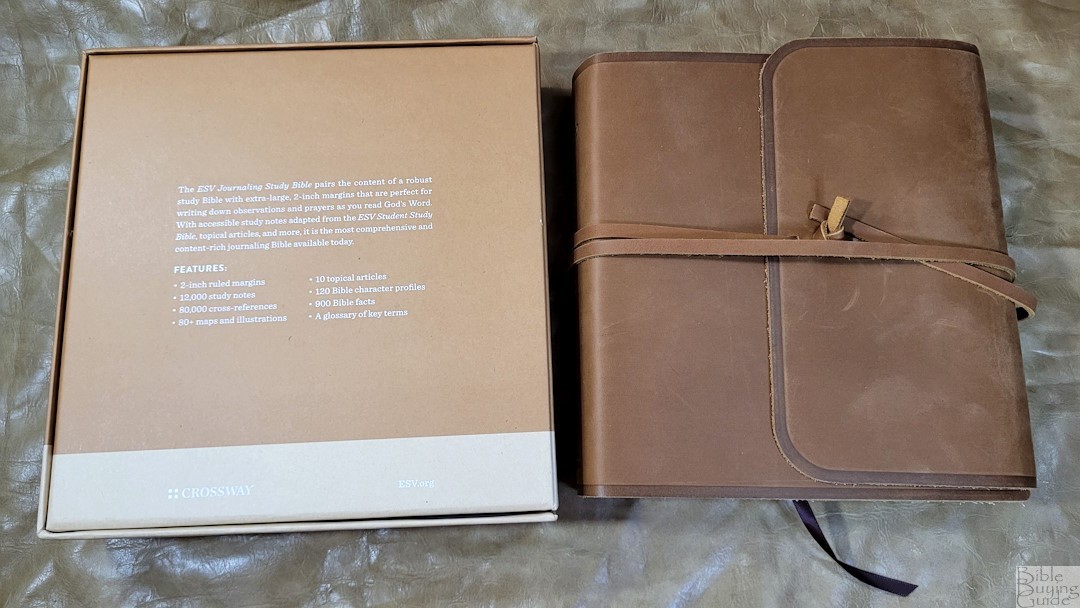
The Journaling Study Bible feels like an excellent student study Bible. The paper is thinner than regular journaling Bibles, but it’s also white rather than yellow, which makes it easier to read. I’m a fan of the natural leather on journaling Bibles and this one looks and feels like a quality cover. It shares its pagination with the Student Study Bible, making them an excellent combo for anyone that wants one with and one without their own notes. I’m glad they used the Student edition because it’s smaller and easier to carry.
_________________________________________________________
This Bible is available at (includes some affiliate links)
and many local Bible bookstores
_________________________________________________________
Crossway provided this Bible in exchange for an honest review. I was not required to give a positive review, only an honest one. All opinions are my own.


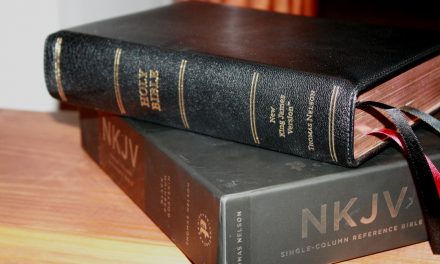
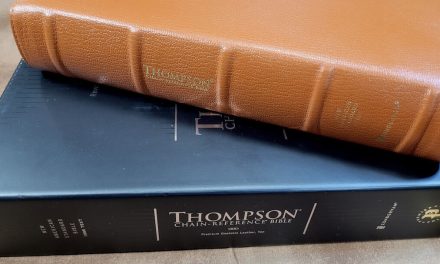
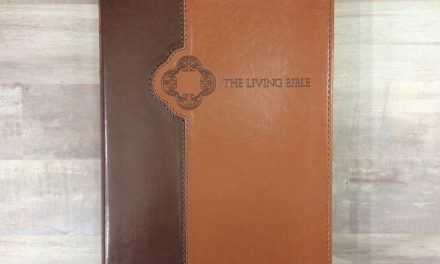





Recent Comments